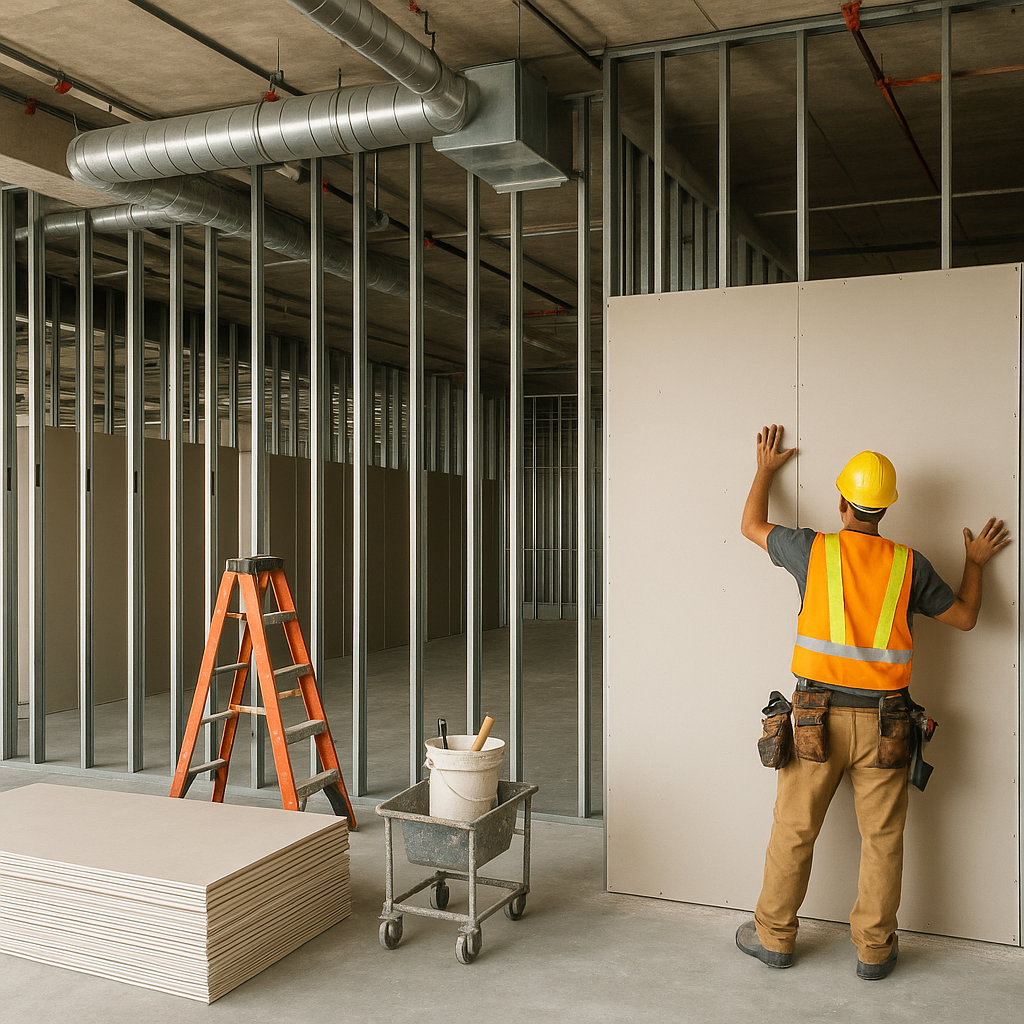
Drywall install time plays a critical role in the overall success of a project bid. While many estimators rely on production averages or previous templates, such generalizations often overlook the complexities of modern construction environments. For architects, engineers, and general contractors, an inaccurate install duration can have ripple effects—delaying other trades, pushing project milestones, and straining budget expectations. Getting install time right is not about guesswork—it's about using data-driven intelligence aligned with real conditions.
Too often, bids are built on legacy benchmarks—such as a fixed square footage per day per crew—without accounting for project-specific logistics. These assumptions ignore key variables such as wall type complexity, material handling routes, floor-to-floor access, and crew sequencing. In short, what works for one site may be wildly off the mark for another.
To develop accurate bids, teams must break down install productivity by real-world conditions, not averages. Several critical factors influence how long drywall installation will actually take:
Drywall install time should be estimated with layered detail—not just volume and rate. A modern approach considers the integration of historical performance benchmarks, modeled job conditions, and ongoing project updates. Using a platform like Active Estimating allows estimators to track real-time install performance across different project types and apply that intelligence to new bids.
Rather than relying solely on front-loaded logic or speculative productivity rates, smart estimators benchmark install times against similar past jobs. This practice builds confidence and removes ambiguity from project timelines. Platforms designed for continuous estimating make it possible to import and track both projected and actual install durations over time. This creates a feedback loop that enhances each subsequent estimate.
Advanced drywall estimating software ties material takeoffs directly to labor calculations. By using contextual inputs—such as ceiling height, board orientation, and layer count—install durations become more accurate and less vulnerable to overgeneralization. The software can also account for subjective inputs like site congestion and sequencing constraints, which influence install speed but are often omitted in early bids.
Missing the mark on drywall install time can derail a well-intentioned bid. In a competitive market, the difference between success and failure often lies in how well a team can forecast reality. Tools like Active Estimating bring clarity by connecting install assumptions with proven data, ensuring that bids are both competitive and constructible. By moving beyond averages and embracing dynamic, data-informed estimating, project teams can deliver with greater precision and predictability.
Schedule a personalized demo to see how Active Estimating can work for your specific needs.
